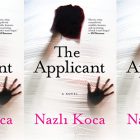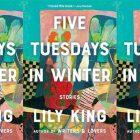Fellow Mortals
 Fellow Mortals
Fellow Mortals
Dennis Mahoney
Farrar, Straus and Giroux, February 2013
288 pages
$15.00
In the wild, there are plants whose seeds lay dormant for long stretches of time, passive and unchanging, until scarified by a fire hot enough to breach their outer layers—and to ravage the landscape around them—so growth can begin. It’s a fascinating and ironic botanical evolution, and a potent metaphor that weaves gracefully through Fellow Mortals, a debut novel by Dennis Mahoney.
The narrative is set in motion when mailman Henry Cooper carelessly but accidentally ignites a blaze in the course of his delivery rounds, burning down or damaging several houses on a cul-de-sac. Even as he rushes into one burning house to rescue a woman trapped inside, a second woman burns to death in another.
All of this is revealed early in the novel, which begins after the scorched earth has stopped smoldering and the burned houses have been razed, because it isn’t a story about how the fire happened but rather how the fire’s impact continues to grow after the dormant seeds of the community were breached by its heat. It opens as a neighbor whose house was damaged walks the land left behind by another house burnt completely and observes,
The lawn is scorched dead along the sidewalk as if a giant magnifying glass had focused on the ground, burning two crisp holes with terrible precision. Arcadia Street has been desolately quiet ever since, and with the vacant lots affording a view of the woodland just behind the yards, the cul-de-sac feels closer to wilderness than any of the blocks between here and the center of town.
It is closer to wilderness in that literal sense but also because the occupant of that now vacant land—Sam, a sculptor who works in wood and a standout for me among multiple compelling characters the novel follows—has himself grown more wild and primal following the loss of his wife in the fire, venturing more often now into those woods that “used to scare him in the dark.” Some of his neighbors grow wilder in their own ways, too, and the novel follows the escalating tensions of the community toward Henry—who persists in being present at the scene of his crime to make amends—but also toward each other, as divergent long-term reactions to the menace and loss of the fire manifest, and characters emerge from their own scarified husks.
Appropriate to a novel about aftermath rather than action, Fellow Mortals is a reflective novel interspersed with moments of more immediate violence and risk that arise organically rather than feeling forced for the sake of advancing a plot. Mahoney excels at juggling the darker possibilities at the edges of his characters’ lives without making them seem predetermined or telegraphed, and the directness of his style—reminiscent of Stewart O’Nan, whose blurb sits above the title on the book’s cover—is deftly but unobtrusively poetic. There is always a sense of options open, of other ways events could turn, which lends the novel with its diverse shades of grief a feeling of rich, humane wholeness.



